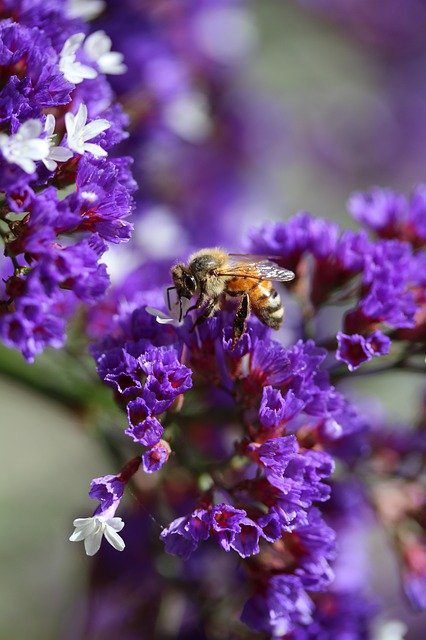When you go through all the trouble of planting a vegetable garden, weeding it, watering it, and basically tending to its every need, you expect that said vegetable garden will provide you with a lot of vegetables. But what happens when you do everything right, the weather co-operates for the most part, but you still don’t end up with a big harvest?
Chances are, you don’t have enough pollinators in your space. Sure, you can hand pollinate your tomatoes, cucumbers, and more, but it’s not sustainable. Instead, you need to get more bees in your vegetable garden–stat!!
In this blog post, I’ll give you 5 of the best strategies to both encourage pollinators, especially bees, to visit your vegetable garden, as well as how to make your garden more bee friendly in general.
This post is sponsored by Kind Bee Farms. I’ll be testing out their pollinator kit with leaf cutter bees in the Spring/Summer of 2021 and updating this post to report on how it goes. I grew up on a farm that had leafcutter bees nearby, and reaped the benefits, so I’m confident that the Kind Bee Farms bee hotel will make a difference in my yard this summer.
1. Plant Flowers
The easiest and prettiest way to attract pollinators to your vegetable garden is to plant flowers. Bees especially love flowers in blue, purple, yellow, and white, but you don’t have to exclusively plant those colours to be bee-friendly. In my garden, the bees really love sleeping in my yellow and pink Zowie Flame zinnias, and tucked up in the folds of my dahlias.

They also love my sunflowers and bee balm too. Check out this post for 44 pollinator friendly flowers that you can grow.
Unfortunately, most of the flowers I mentioned all flower at the same time. But the bees need food during the entire warm part of the year–not just July and August. Which brings us to our next strategy. . .
2. Leave dandelions and clover in your lawn
I like a pristine lawn as much as the next person, but if you’re serious about bringing bees to your backyard, you’ll leave at least the first few dandelions and clover bloom to help out the bees. Once some of your spring perennials start blooming, then you can mow down those weeds as you please.
If you can’t bear to have dandelions blooming on your lawn, then at least consider leaving some areas of your yard a bit untidy with dried up leaves and last year’s perennial husks so the bees have some places to live.
3. Avoid using pesticides
In a home gardening situation, it’s usually pretty easy to avoid pesticide use and stick to organic pest remedies. However, if you have a really bad infestation and need to use a pesticide, here’s the best way to do it to avoid harming bees:
- Avoid using pesticides on flowering plants and weeds
- Apply pesticides only to the affected area in question, in as small an area as possible.
- Apply pesticides from 8pm to 8am when bees are less likely to be moving around
- Apply pesticides when the temperature is warmer. Residues remain on plants for a longer time when the weather is cool.

4. Make a Bee Bath
On your path to making your yard more bee-friendly, consider making a little bee bath–a place similar to a bird bath where bees can grab a drink. Place a saucer in a low lying, sunny area, fill it with water, and set a few flat rocks in it where bees can land. The bees will thank you for the drink and hopefully reward your vegetable garden with increased pollination.
5. Provide Shelter
Finally, one of the best ways to encourage pollinators in your vegetable garden is to provide shelter for them by building a bee hotel. But not just any bee hotel will do. Many bee houses on the market actually do more harm than good. You need to look for one with smooth insides on the cylinders and some overhang to provide shelter from the wind.

The frustrating thing is, that sometimes you can put up a bee hotel, but the bees don’t come. You can eliminate this problem by getting a bee house that comes included with the bees–therefore practically guaranteeing that you’ll have pollination in your vegetable garden.
Why You Should Get a Leafcutter Bee House
Honey bees and mason bees get all the glory, but there’s actually a much better pollinator out there–leaf cutter bees. Leaf cutter bees have fuzzy bellies (not sticky bellies like honeybees) so they spread more pollen. Meaning, your vegetables have an increased chance of pollination, because leafcutter bees can pollinate more plants in a day.
I get my pollinator kit from Kind Bees. They ship to both Canada and the US, and the house actually comes with the bees–no buying a bee house only to be disappointed with bees that never show up.
Finally, leafcutter bees are low flying and tend to stick to a smaller area, so they won’t just fly away and leave your yard.
If you’re struggling with pollination, grab your pollinator kit here. You can order now, and it will be delivered to you at the perfect time for your area in the Spring.
P.S. Follow me on Instagram or Facebook so you can see how the leaf cutter bees improve pollination in my yard in real time in Spring/Summer 2021.



Join the conversation